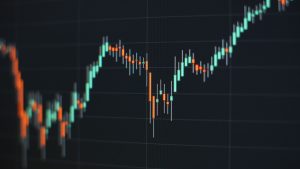When it comes to technical analysis in trading, divergences play a critical role in identifying potential market reversals or continuations. While regular divergences often signal market reversals, hidden divergences can be a powerful indicator for continuation patterns, providing confluence for traders to capitalize on ongoing trends.
In this blog post, we’ll dive into what hidden divergences are, how they differ from regular divergences, and why they are such a valuable tool when combined with continuation patterns in your trading strategy.
What Are Hidden Divergences?
A hidden divergence occurs when the price is forming a higher low (in an uptrend) or a lower high (in a downtrend), but the corresponding indicator—such as RSI, MACD, or Stochastic—is showing the opposite. Essentially, hidden divergences indicate that the trend is likely to continue, offering a signal that the pullback or retracement is temporary.
Hidden Bullish Divergence (Uptrend)
Occurs when the price makes a higher low, but the indicator makes a lower low. This suggests that the underlying trend is still strong, and the retracement is likely to end soon, with the price resuming its upward movement.
Hidden Bearish Divergence (Downtrend)
Occurs when the price makes a lower high, but the indicator makes a higher high. This indicates that the downward trend is still dominant and that the retracement is likely to be followed by further downside movement.
Hidden Divergences as Confluences in Continuation Patterns
Continuation patterns, such as flags, pennants, and wedges, signal that the current trend is likely to resume after a brief consolidation period. Traders look for these patterns when they want to enter a trade in the direction of the trend, but identifying the right time to enter can be tricky.
This is where hidden divergences come into play. They serve as a powerful confluence—an additional signal that confirms the likelihood of a trend continuation. When a hidden divergence aligns with a continuation pattern, it increases the probability of the trade playing out successfully.
How Hidden Divergences Strengthen Continuation Patterns
- Increased Confidence in Trend Continuation
Continuation patterns, like flags or triangles, give you a hint that the trend may continue, but they aren’t foolproof. Hidden divergences act as an extra layer of confirmation. For example, if you’re seeing a bullish flag in an uptrend and also spot a hidden bullish divergence on the RSI or MACD, you can be more confident that the upward trend is likely to resume.
- Timing Entries with Greater Precision
Timing an entry can be difficult when relying solely on continuation patterns. Hidden divergences allow traders to time their entries with greater precision by signaling that a temporary retracement is nearing its end. In a bullish continuation pattern, a hidden bullish divergence suggests that the price is about to push higher, offering a clear opportunity to enter the trade before the next leg of the trend.
- Filter Out False Breakouts
Not every breakout from a continuation pattern is legitimate. Hidden divergences can help filter out false breakouts, allowing you to avoid being trapped in a reversal. By identifying whether the trend still has momentum, hidden divergences provide valuable insight into whether the breakout from the pattern will have the necessary strength to continue the trend.
Example of Hidden Divergence and Continuation
Let’s say you’re observing an uptrend in a cryptocurrency chart and notice a bullish flag forming. As the price pulls back during the consolidation, you spot a hidden bullish divergence—while the price makes a higher low, the RSI forms a lower low. This hidden divergence indicates that the retracement is likely ending and that the bulls are still in control. With this confluence, you can confidently enter a long position, anticipating that the price will break out of the bullish flag and continue the uptrend.
Best Indicators for Spotting Hidden Divergences
While hidden divergences can be spotted using various technical indicators, some of the most reliable include:
- Relative Strength Index (RSI): Useful for measuring momentum and spotting divergences between price and strength.
- Moving Average Convergence Divergence (MACD): Helps track momentum and identify potential shifts in trend.
- Stochastic Oscillator: Measures the closing price relative to the range over a certain period, making it a great tool for spotting hidden divergences.
These indicators work well in conjunction with continuation patterns, helping traders confirm the strength of the current trend and enhancing their overall strategy.
Conclusion: Using Hidden Divergences for a Stronger Trading Strategy
Hidden divergences are an often overlooked but highly effective tool for identifying trend continuation. When combined with continuation patterns like flags or triangles, they offer a powerful confluence that helps traders make more confident and precise trading decisions. Spotting hidden divergences takes practice, but once mastered, they can significantly improve your trading strategy by reducing false signals and maximizing trend-following opportunities.
🚀 Ready to sharpen your trading skills? Join the EPIQ Trading Floor today for access to in-depth trading tutorials, real-time signals, and a community of like-minded traders. Start your 3-day risk-free trial now! Click here to get started.
Disclaimer: All content provided in this blog is for informational purposes only and should not be considered financial advice. Always do your own research before making any investment decisions.










Responses